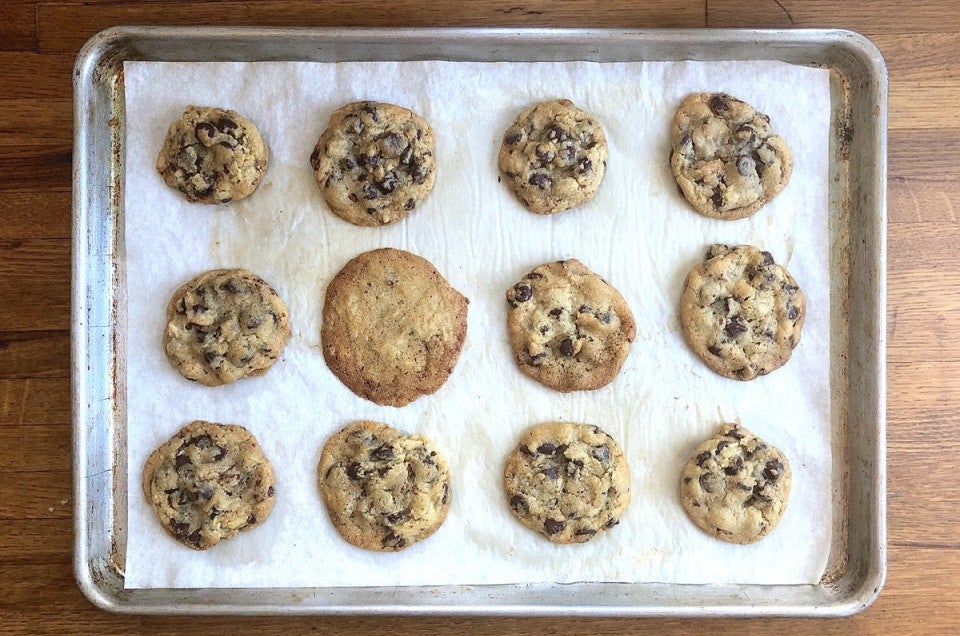


You know how certain recipes, especially those for cookies, cake, and muffins, direct you to scrape the mixing bowl some time midway through the dough or batter prep? “Add the eggs one at a time, scraping the bottom and sides of the bowl between additions.”
What’s up with that? It’s a pain in the neck to stop the mixer, get out the spatula, and dub around with a big batch of half-mixed batter. So will anything terrible happen if you don’t scrape the bowl?
Well, it’s not like your cookies or cake will be a total fail. But when making any kind of sticky batter or dough, you’ll certainly get better results if you do take a moment, when directed, to scrape out any clingy residue from inside the mixing bowl.
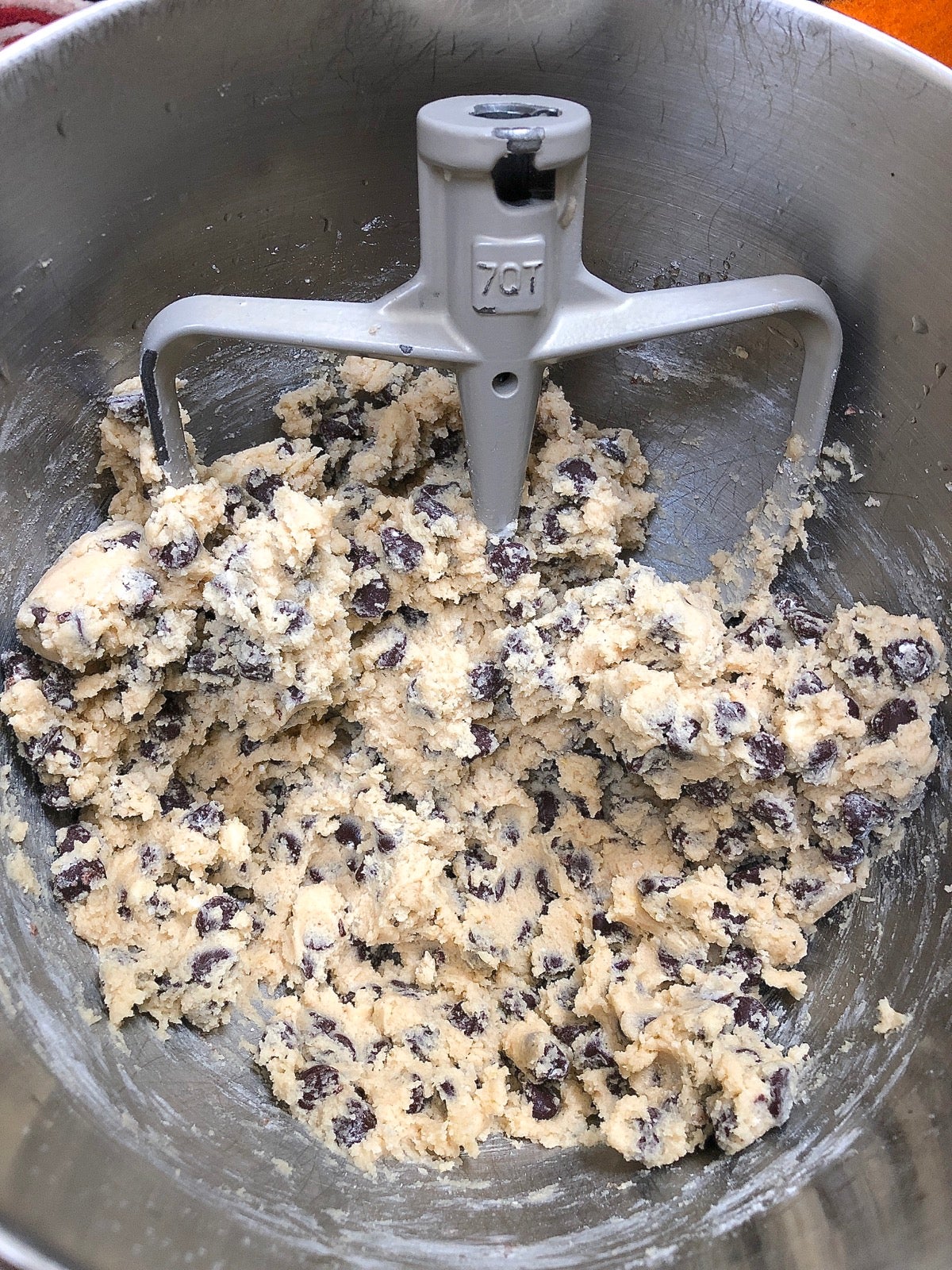
Chocolate chip cookies: who can resist? And their sticky dough is perfect for this test.

I mix together sugar, butter, shortening, salt, a couple of extracts, vinegar, baking soda, and an egg. My directions say to “Scrape the bottom and sides of the bowl with a spatula to make sure everything is thoroughly combined” before adding the flour and chips.
To test whether scraping makes a difference in my cookies, I’ll divide the dough in half before adding the flour and chips. I transfer half the dough (scraping its half of the bowl thoroughly) into a separate container; and leave the other half in the bowl, skipping any scraping.
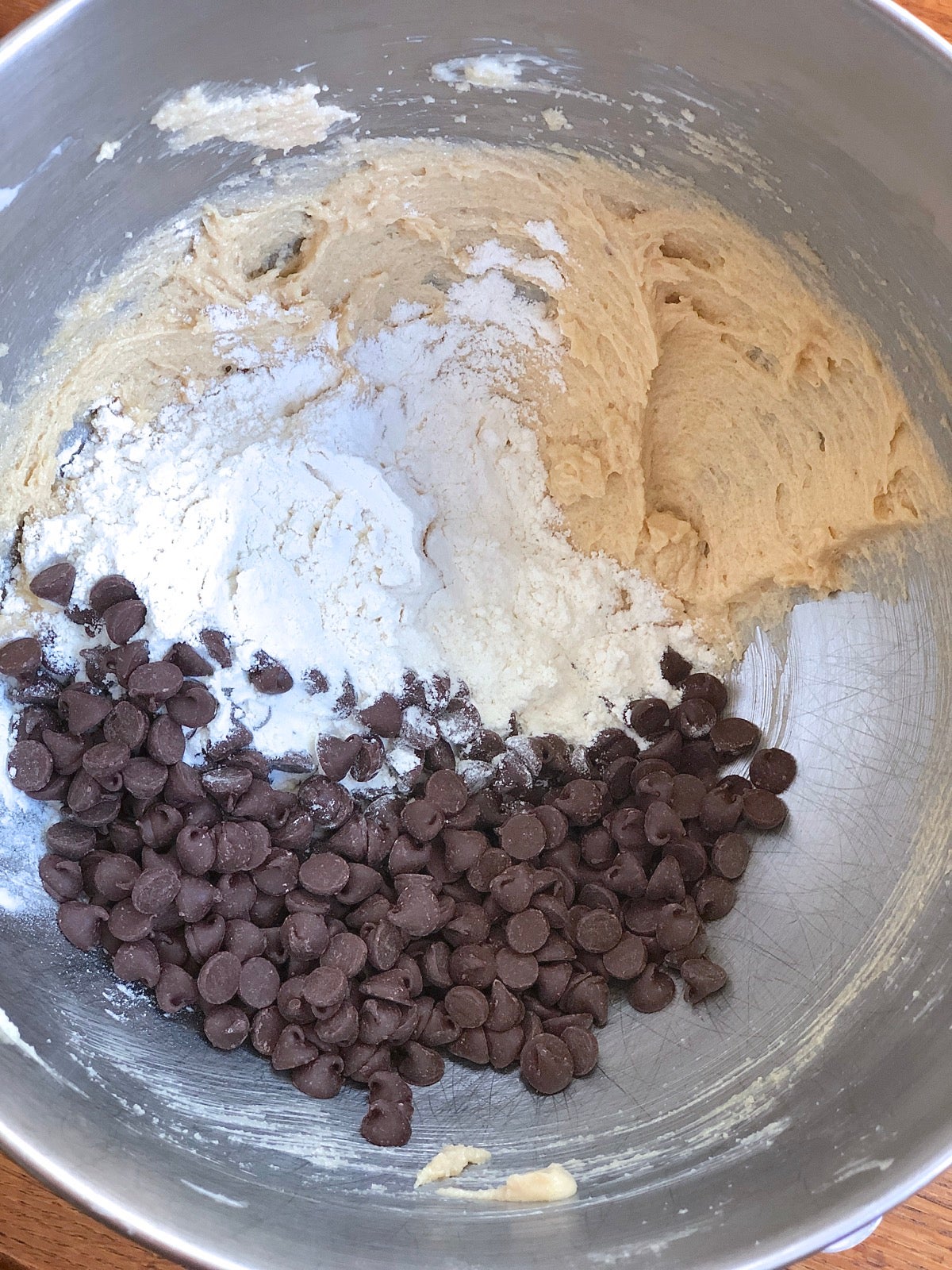
I add flour and chips to the unscraped bowl and mix everything up thoroughly.

I then scoop this "unscraped" cookie dough onto a parchment-lined baking sheet.
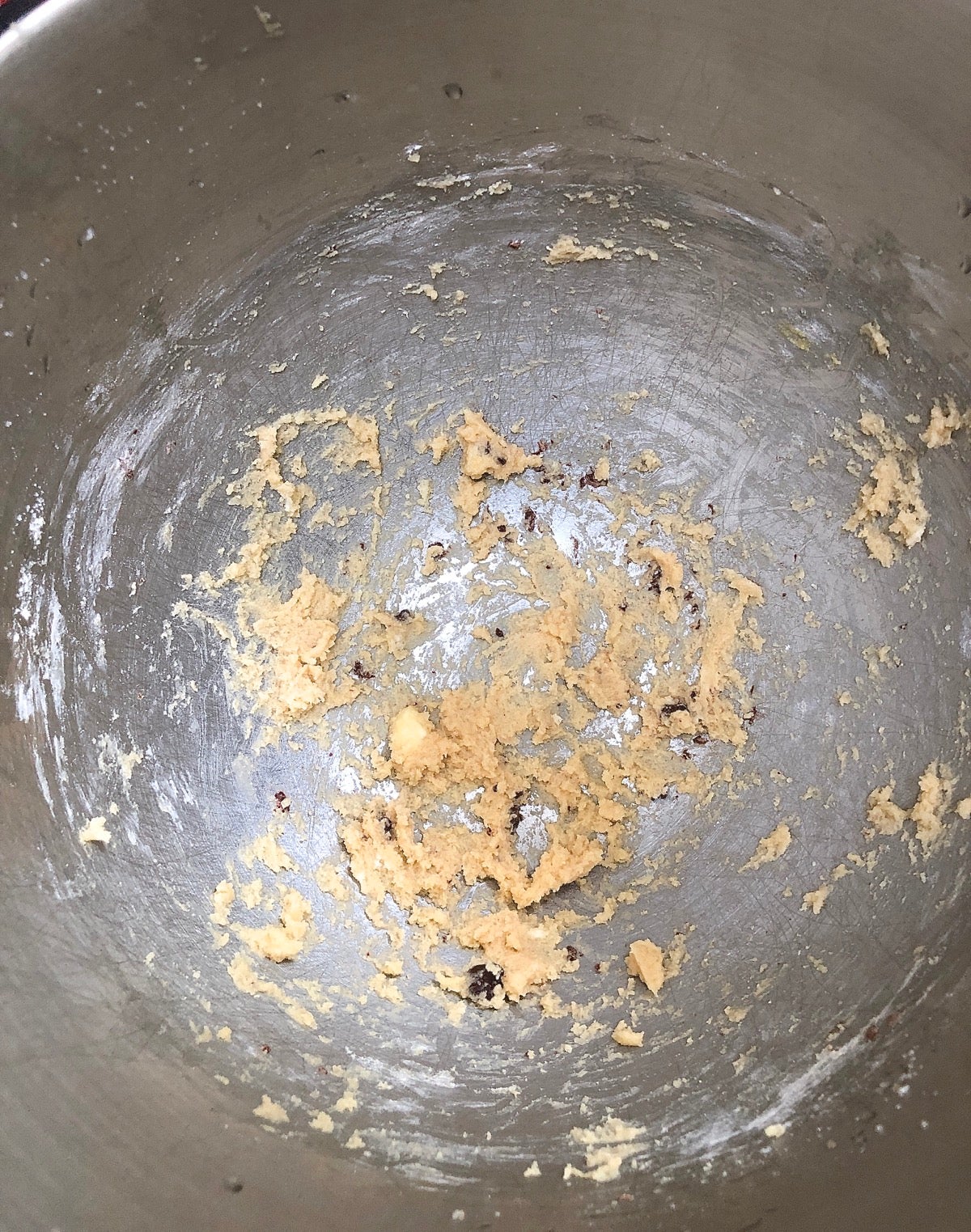
Look what happens when I get to the bottom of the bowl: There’s a layer of fat, sugar, and egg that never combined with the flour and chips.
Too late to do anything about that. But I’ll scrape out this last little bit of “dough” in the bowl and bake it into a couple of cookies anyway.

Meanwhile, I combine the first half of dough, the one that included scraping the bowl, with flour and chips, scoop, and bake it into cookies.

Much nicer, eh?
Perhaps the recipe author felt there's no need. But I always scrape the bowl (and recombine any residue) right at the end, just before scooping out the cookies and baking. Why?
First, because there may still be some uncombined fat and sugar lurking somewhere. And second, if the dough includes add-ins (chips, fruit, nuts), if I don’t scrape I guarantee the dough at the bottom will be quite devoid of chips, nuts, or whatever I've added; it just works out that way.

Sure, I can sprinkle a few more chips into the bowl and mix them into the dough. But how much simpler it is to scrape the bowl before I start to scoop, making sure all of the dough — top, middle, and bottom of the bowl — has its share of chips.

Cake batter is really the same deal as cookie dough: whether the recipe says to or not, scrape the bowl.
Many cake recipes, including our Back-to-Basics Yellow Cake, call for beating (“creaming”) butter, sugar, and perhaps a few other ingredients as the first step in preparing the batter.
Unless you scrape the bowl — either right after creaming the butter/sugar mixture, or at the very end — you may very well leave a layer of that butter and sugar (or butter, sugar, and everything else, including flour) on the sides and in the bottom of bowl when you pour your batter into the cake pan.

So you've poured your batter into its pan, and whoops — you forgot to scrape. What do you do with that sticky stuff in the bottom of he bowl? Try to whisk it into the batter in the cake pan? Pour the batter out of the pan and back into the bowl to recombine everything?

Here I’m simply plopping the wad of unmixed flour, butter, and sugar atop the batter in the pan and stirring it in a bit.
I also make up another batch of batter, this time scraping the bowl as directed.
I bake both cakes, and look what happens:

The “scraped” cake (rear) is perfect. And the unscraped cake? UGLY.
So is it worth it to do what the recipe says, and scrape that sticky dough or batter off the bottom and sides of your mixing bowl?

You be the judge.
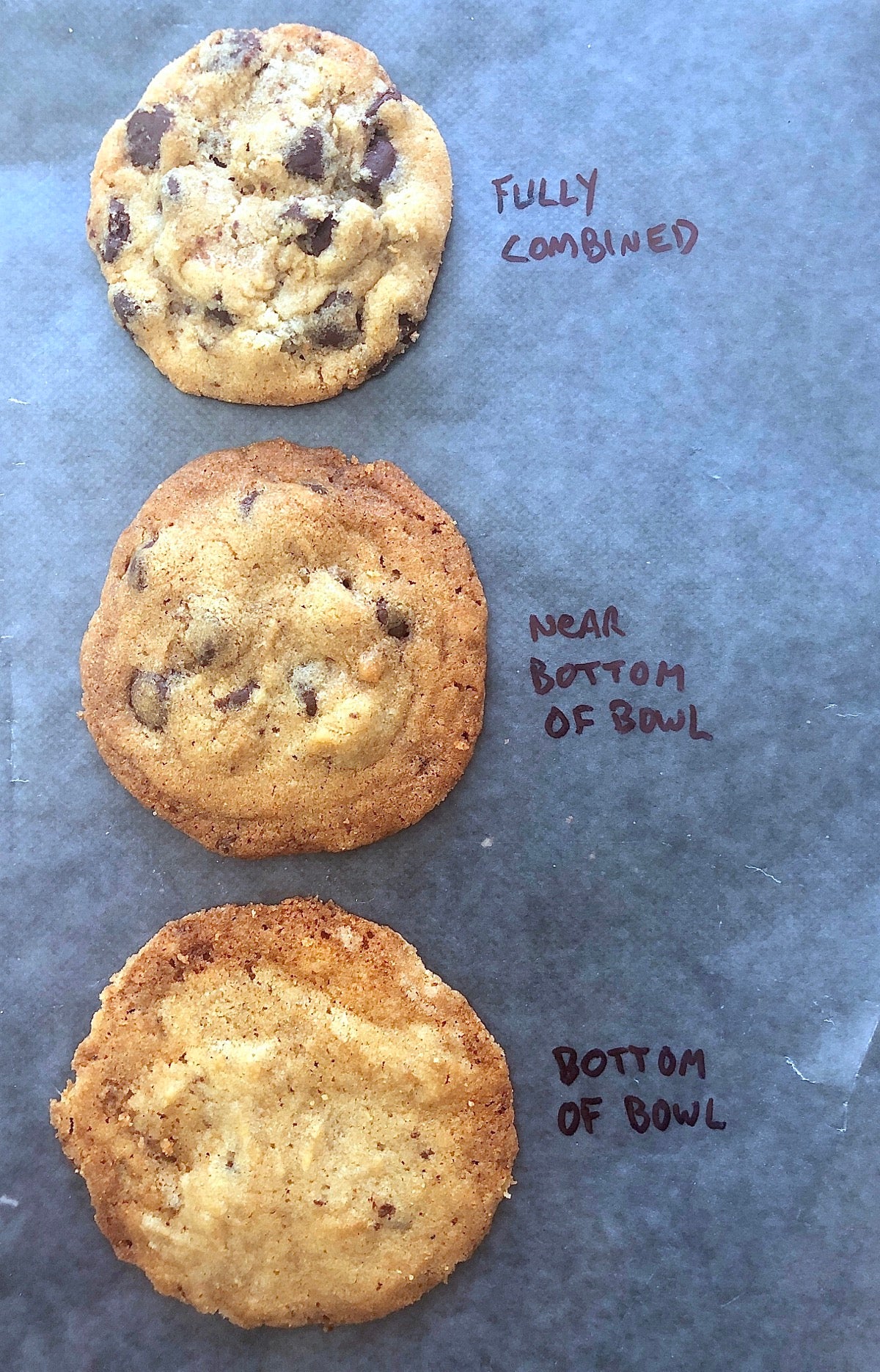
Speaking of cake and muffins, here's another "Do I really have to..." situation: using paper muffin cups in your muffin/cupcake pan. What difference does it make, really? Find out in How to use cupcake and muffin papers: they're more critical than you think.

